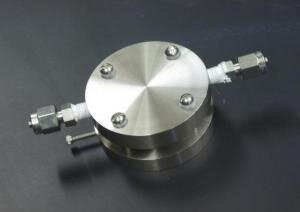Significant Step Toward Lightweight Batteries
A team of researchers at MIT has made significant progress on a technology that could lead to batteries with up to three times the energy density of any battery that currently exists.
Yang Shao-Horn, an MIT associate professor of mechanical engineering and materials science and engineering, says that many groups have been pursuing work on lithium-air batteries, a technology that has great potential for achieving great gains in energy density.
But there has been a lack of understanding of what kinds of electrode materials could promote the electrochemical reactions that take place in these batteries.
Lithium-oxygen (also known as lithium-air) batteries are similar in principle to the lithium-ion batteries that now dominate the field of portable electronics and are a leading contender for electric vehicles.
But because lithium-air batteries replace the heavy conventional compounds in such batteries with a carbon-based air electrode and flow of air, the batteries themselves can be much lighter. That's why leading companies, including IBM and General Motors, have committed to major research initiatives on lithium-air technology.
In a paper published this week in the journal Electrochemical and Solid-State Letters, Shao-Horn, along with some of her students and visiting professor Hubert Gasteiger, reported on a study showing that electrodes with gold or platinum as a catalyst show a much higher level of activity and thus a higher efficiency than simple carbon electrodes in these batteries.
In addition, this new work sets the stage for further research that could lead to even better electrode materials, perhaps alloys of gold and platinum or other metals, or metallic oxides, and to less expensive alternatives.
Doctoral student Yi-Chun Lu, lead author of the paper, explains that this team has developed a method for analyzing the activity of different catalysts in the batteries, and now they can build on this research to study a variety of possible materials.
"We'll look at different materials, and look at the trends," she says. "Such research could allow us to identify the physical parameters that govern the catalyst activity. Ultimately, we will be able to predict the catalyst behaviors. "

"Test battery has inlet and outlet on the sides to provide a flow of air, providing oxygen for the battery's operation. Photo: (Credit: Patrick Gillooly/MIT)"
Source: Massachusetts Institute of Technology
|